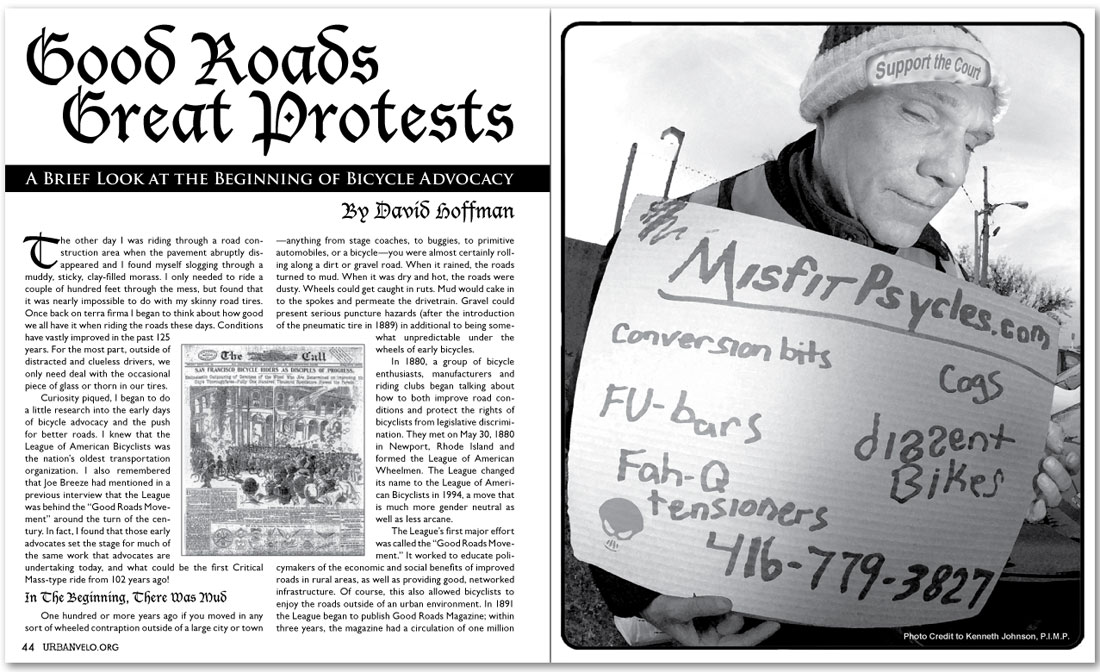

|
|||
Good Roads, Great Protests
By David Hoffman The other day I was riding through a road construction area when the pavement abruptly disappeared and I found myself slogging through a muddy, sticky, clay-filled morass. I only needed to ride a couple of hundred feet through the mess, but found that it was nearly impossible to do with my skinny road tires. Once back on terra firma I began to think about how good we all have it when riding the roads these days. Conditions have vastly improved in the past 125 years. For the most part, outside of distracted and clueless drivers, we only need deal with the occasional piece of glass or thorn in our tires. Curiosity piqued, I began to do a little research into the early days of bicycle advocacy and the push for better roads. I knew that the League of American Bicyclists was the nation’s oldest transportation organization. I also remembered that Joe Breeze had mentioned in a previous interview that the League was behind the “Good Roads Movement” around the turn of the century. In fact, I found that those early advocates set the stage for much of the same work that advocates are undertaking today, and what could be the first Critical Mass-type ride from 102 years ago! In The Beginning, There Was Mud One hundred or more years ago if you moved in any sort of wheeled contraption outside of a large city or town —anything from stage coaches, to buggies, to primitive automobiles, or a bicycle—you were almost certainly rolling along a dirt or gravel road. When it rained, the roads turned to mud. When it was dry and hot, the roads were dusty. Wheels could get caught in ruts. Mud would cake in to the spokes and permeate the drivetrain. Gravel could present serious puncture hazards (after the introduction of the pneumatic tire in 1889) in additional to being somewhat unpredictable under the wheels of early bicycles. In 1880, a group of bicycle enthusiasts, manufacturers and riding clubs began talking about how to both improve road conditions and protect the rights of bicyclists from legislative discrimination. They met on May 30, 1880 in Newport, Rhode Island and formed the League of American Wheelmen. The League changed its name to the League of American Bicyclists in 1994, a move that is much more gender neutral as well as less arcane. The League’s first major effort was called the “Good Roads Movement.” It worked to educate policymakers of the economic and social benefits of improved roads in rural areas, as well as providing good, networked infrastructure. Of course, this also allowed bicyclists to enjoy the roads outside of an urban environment. In 1891 the League began to publish Good Roads Magazine; within three years, the magazine had a circulation of one million
|
|
|
|